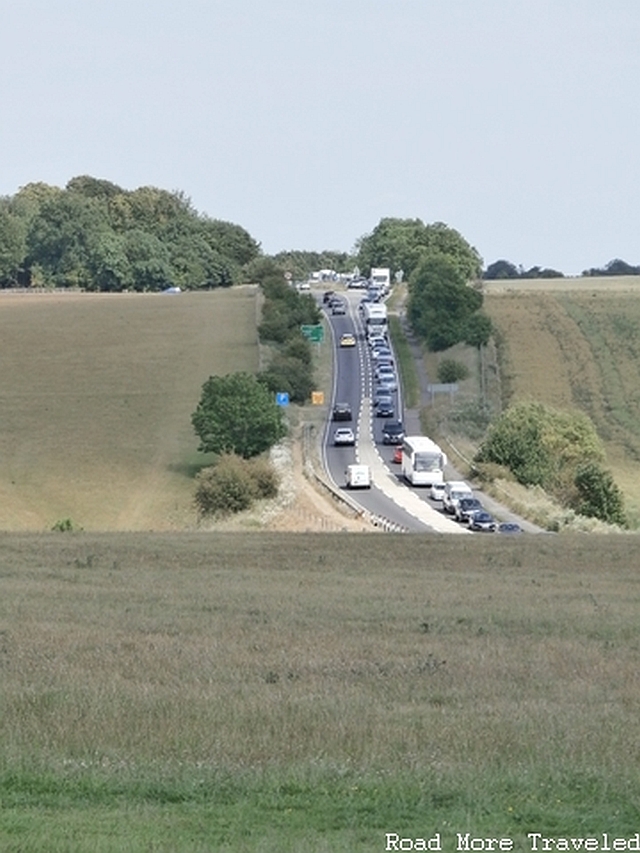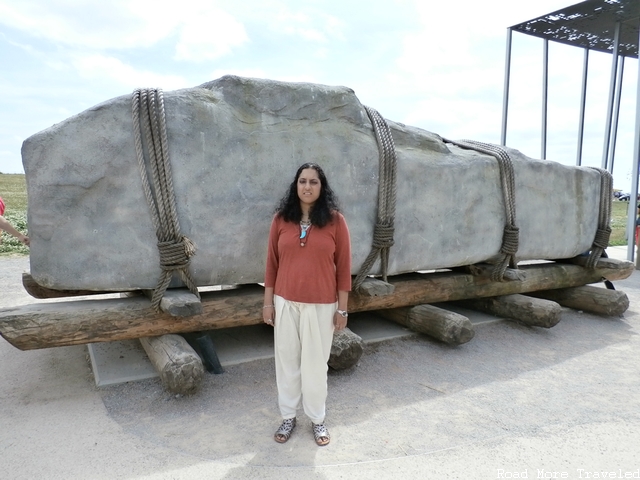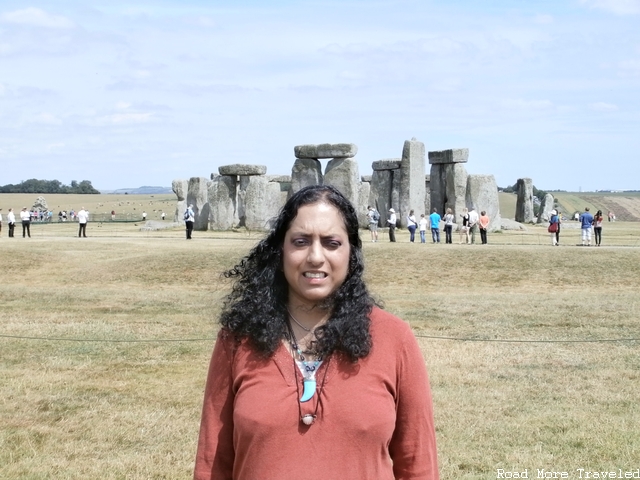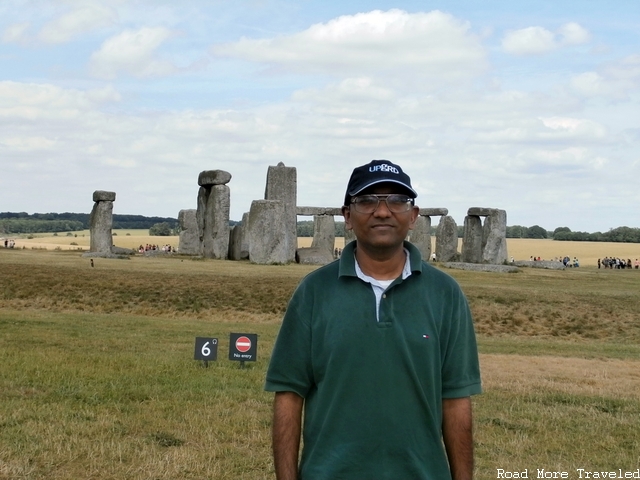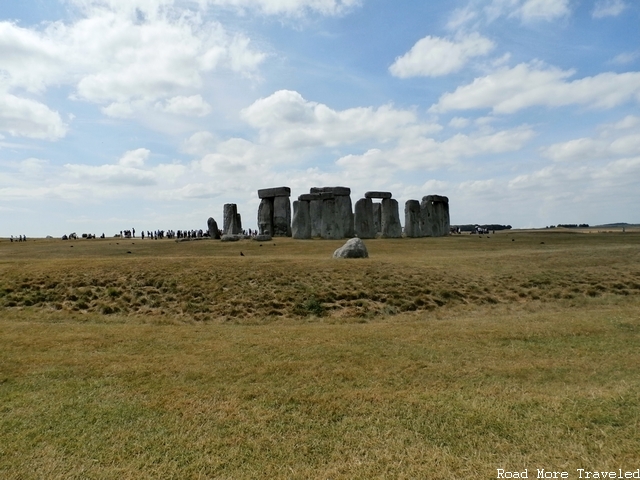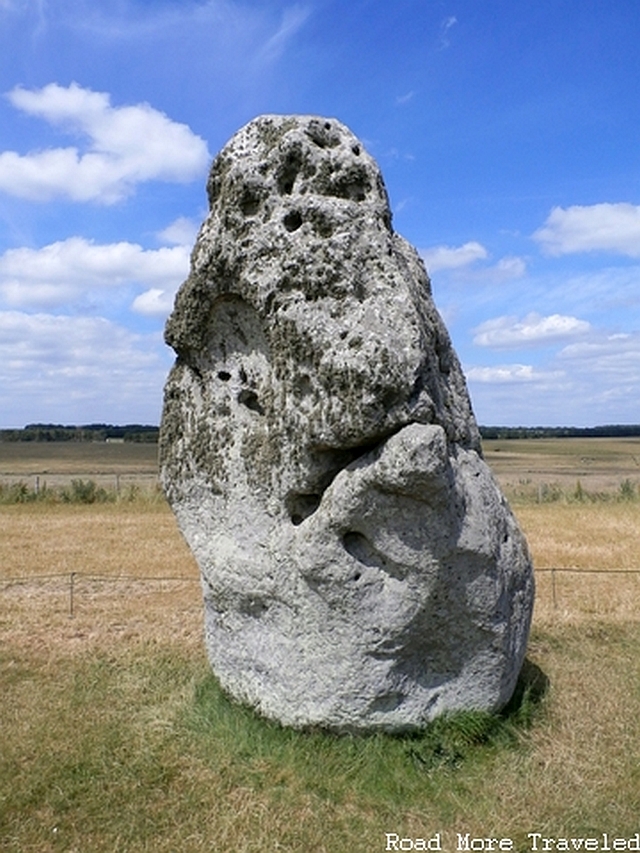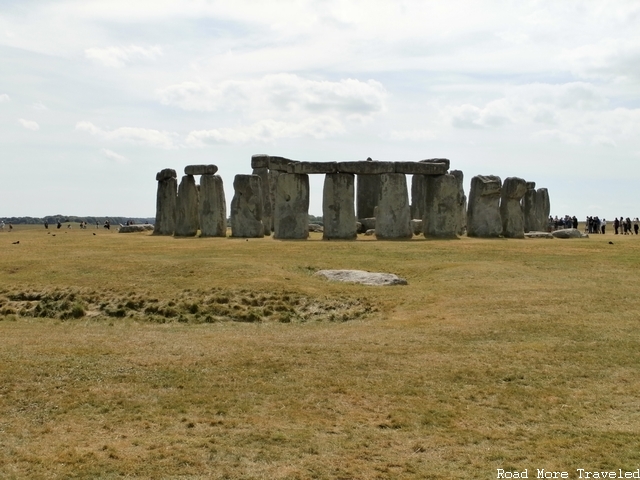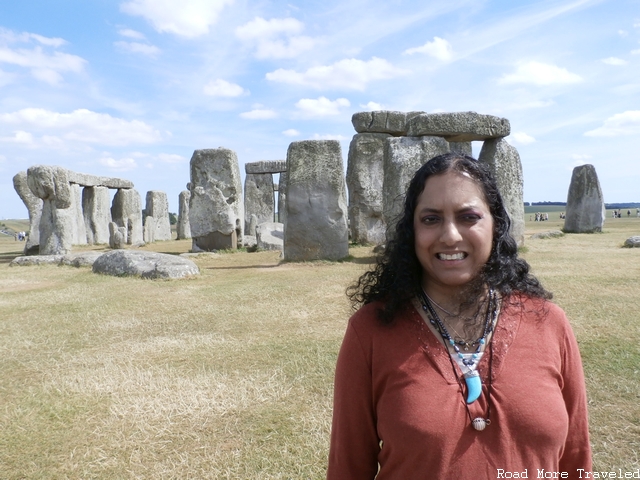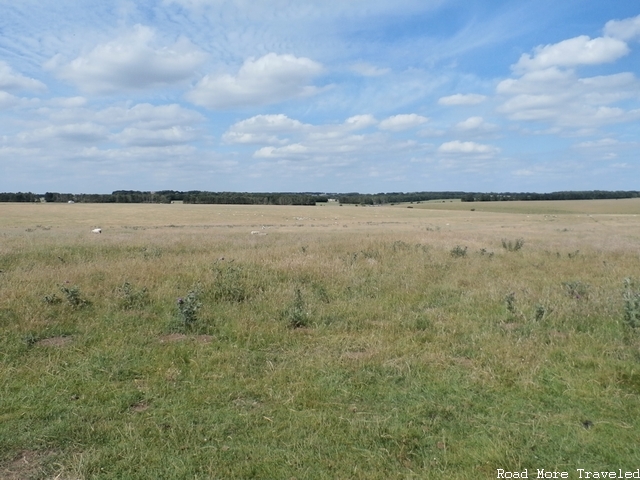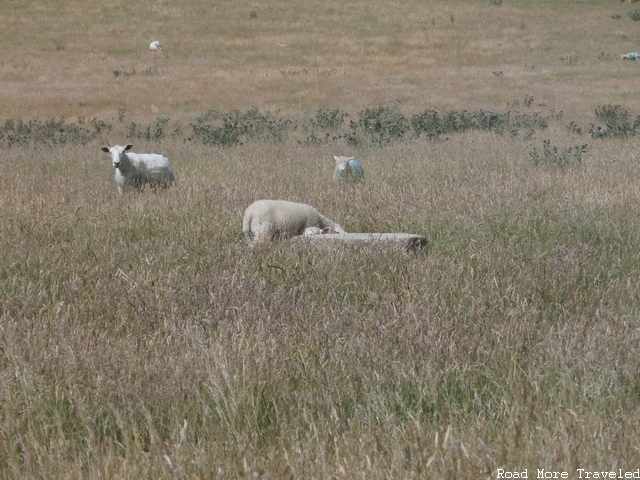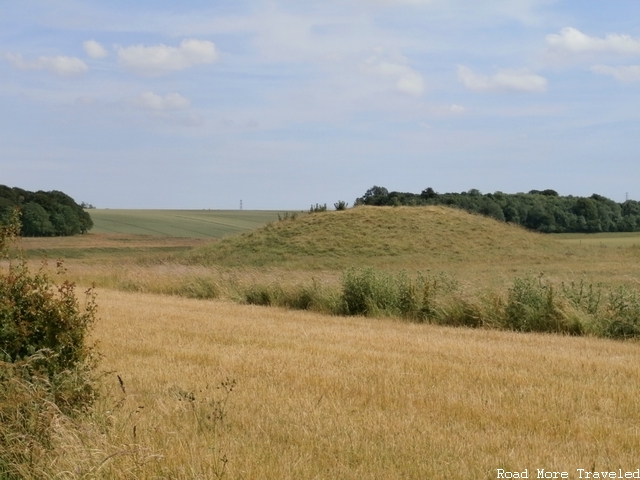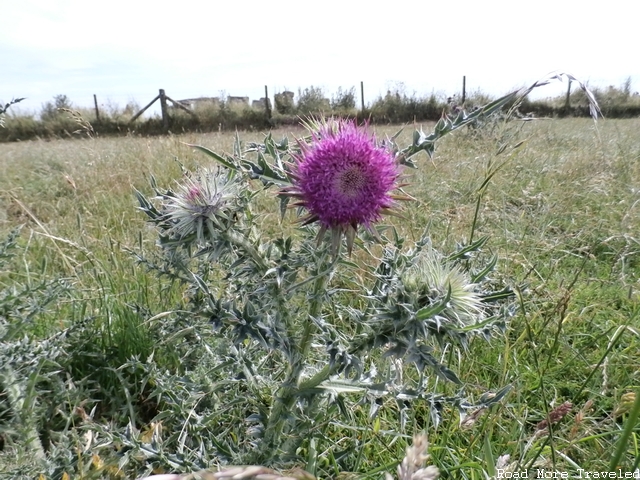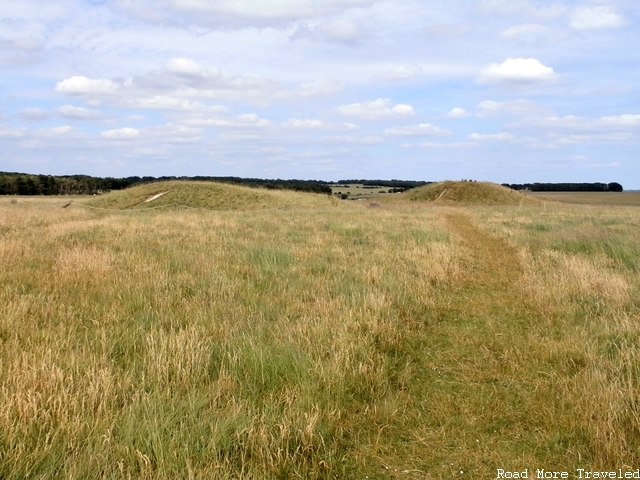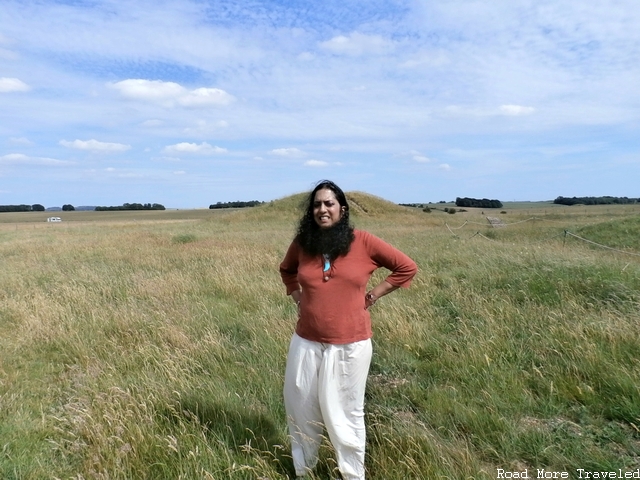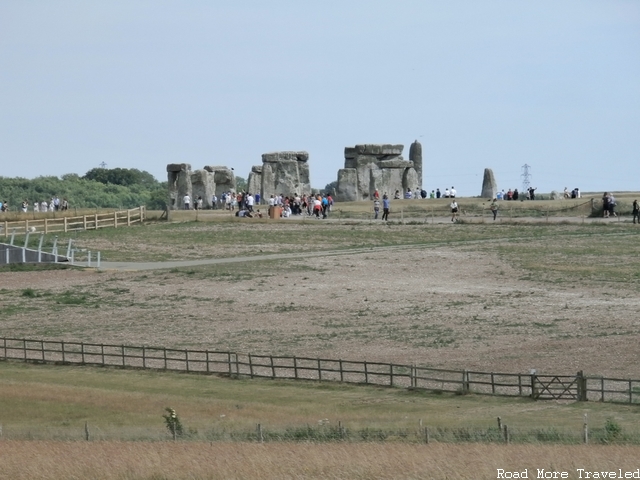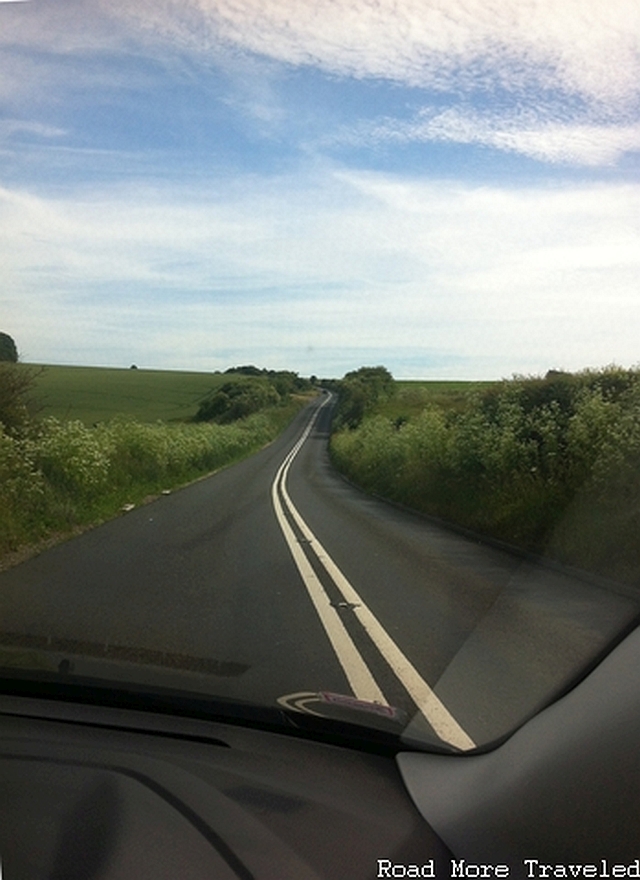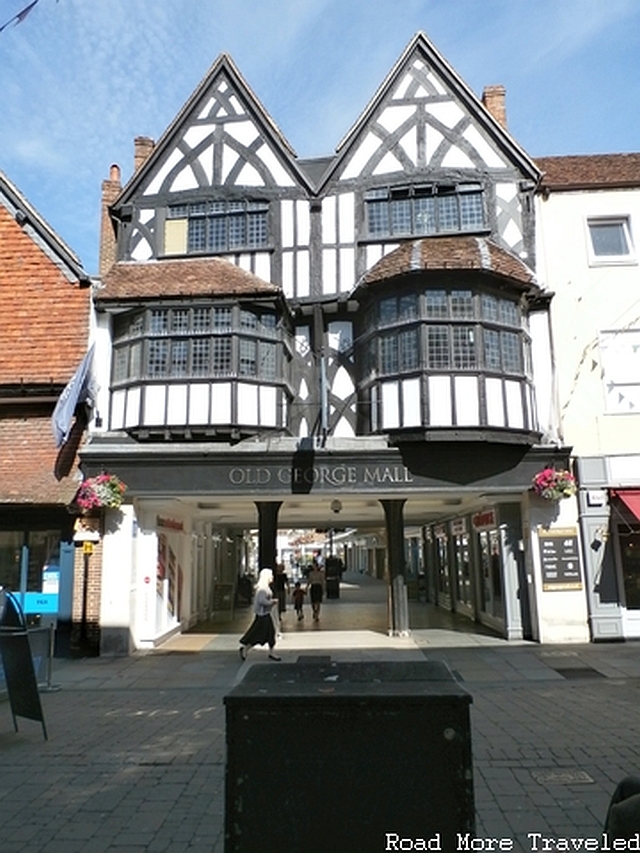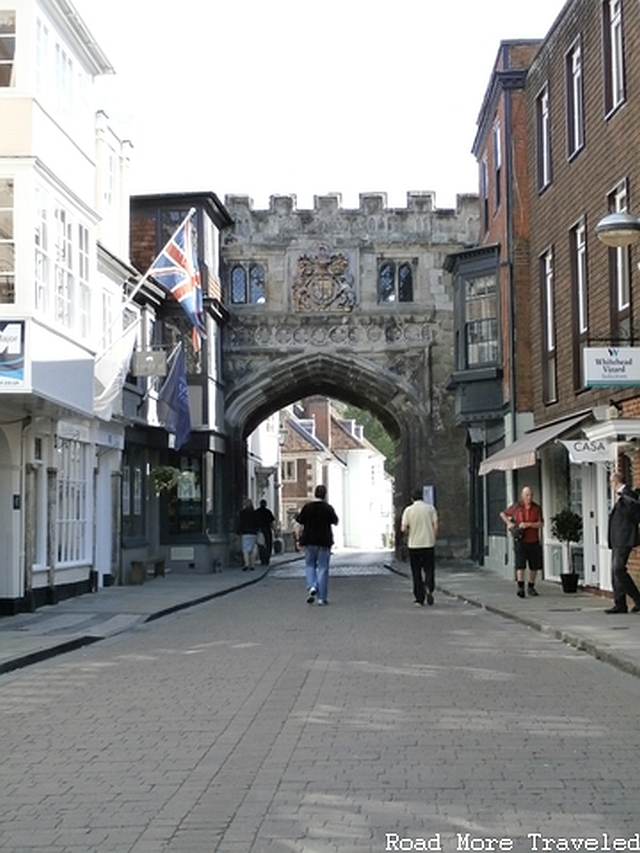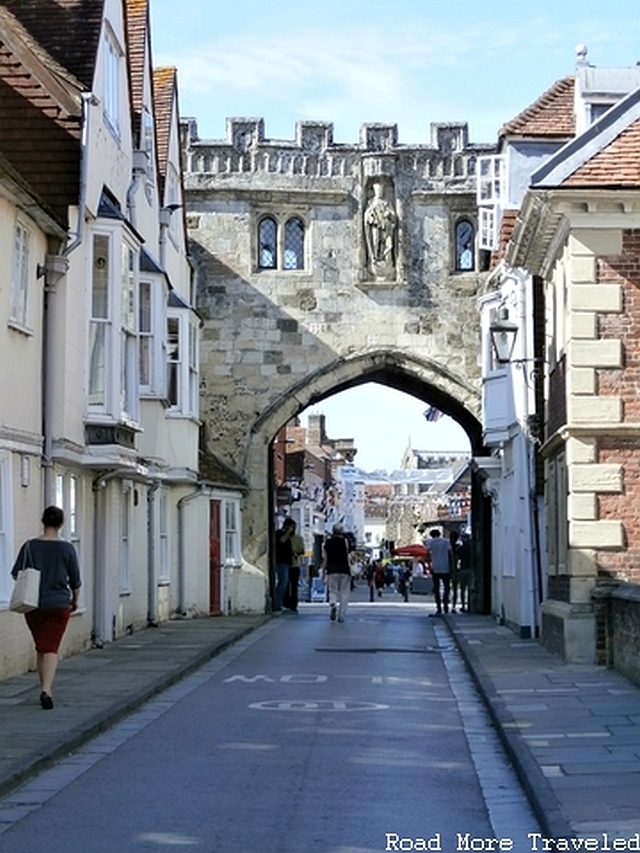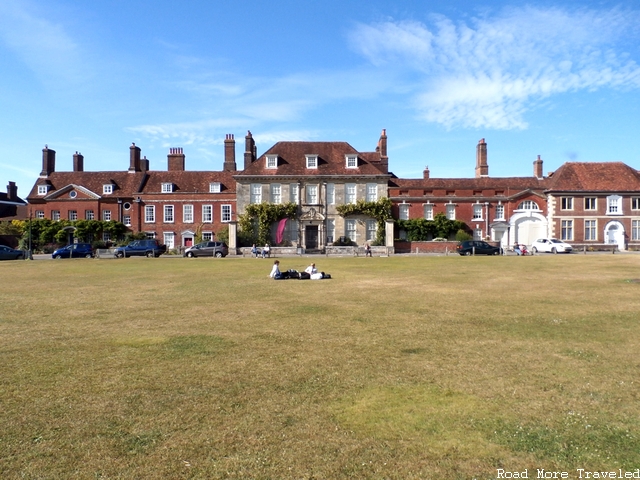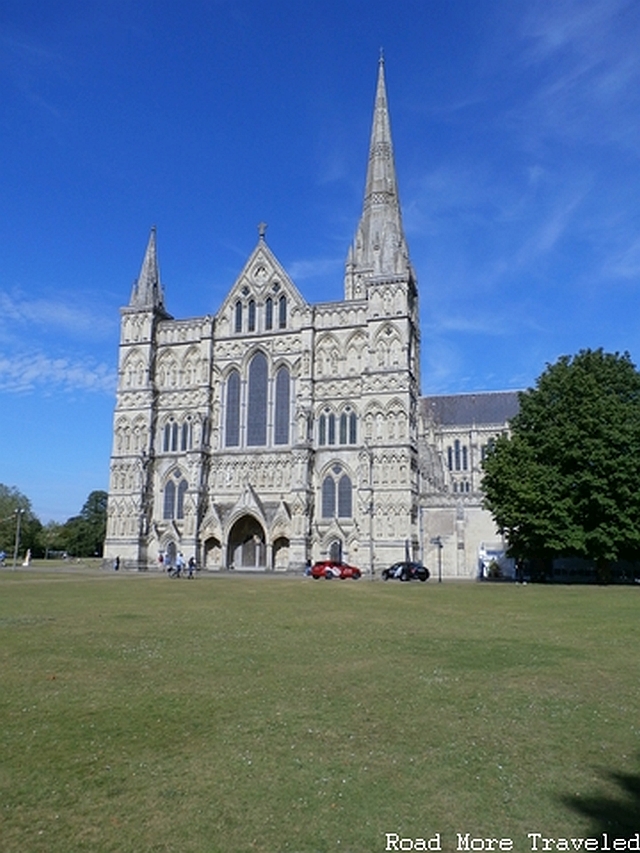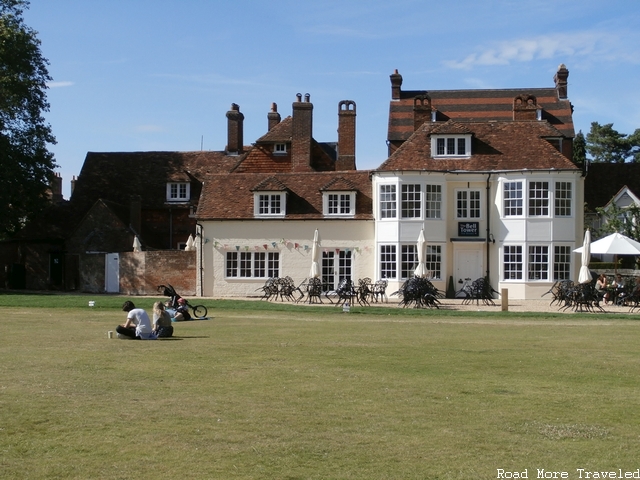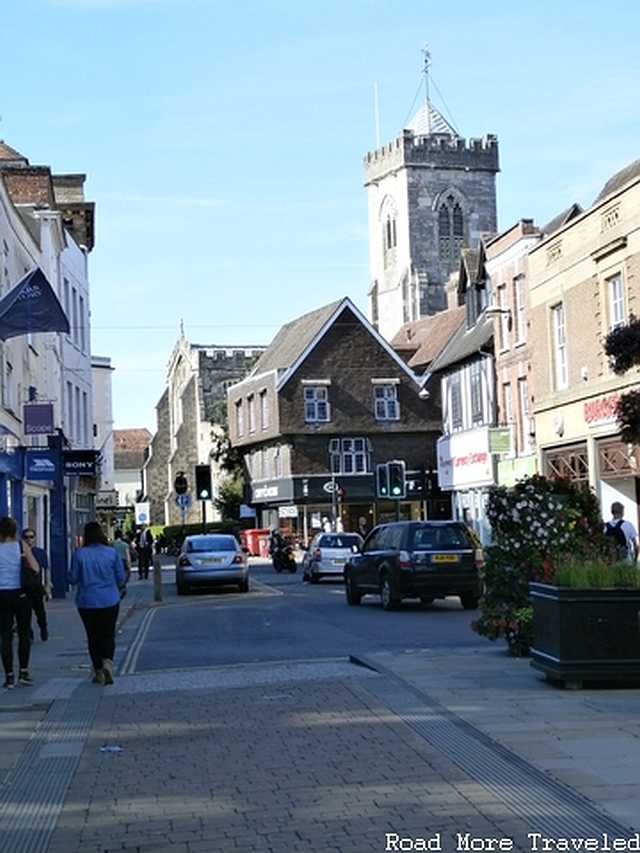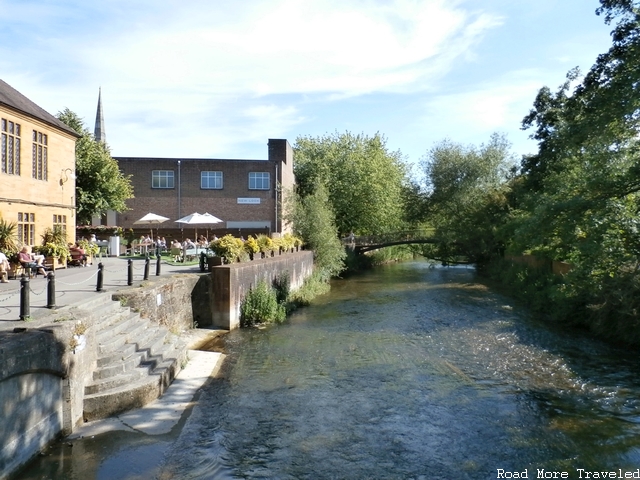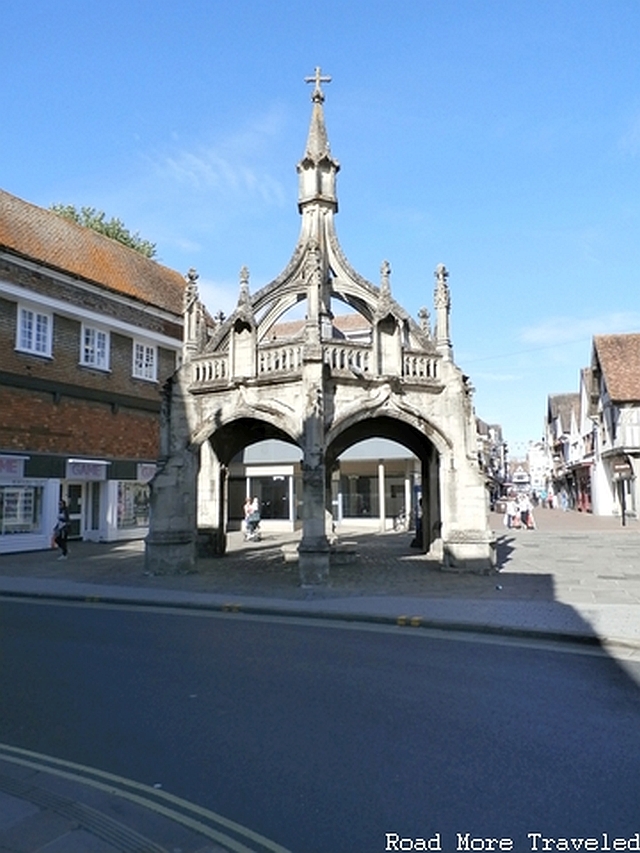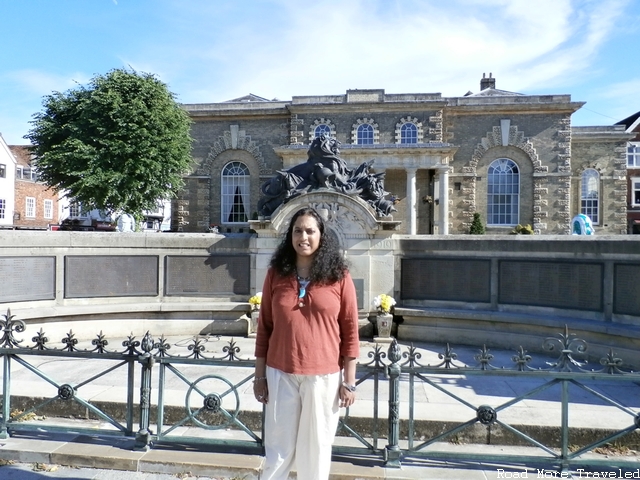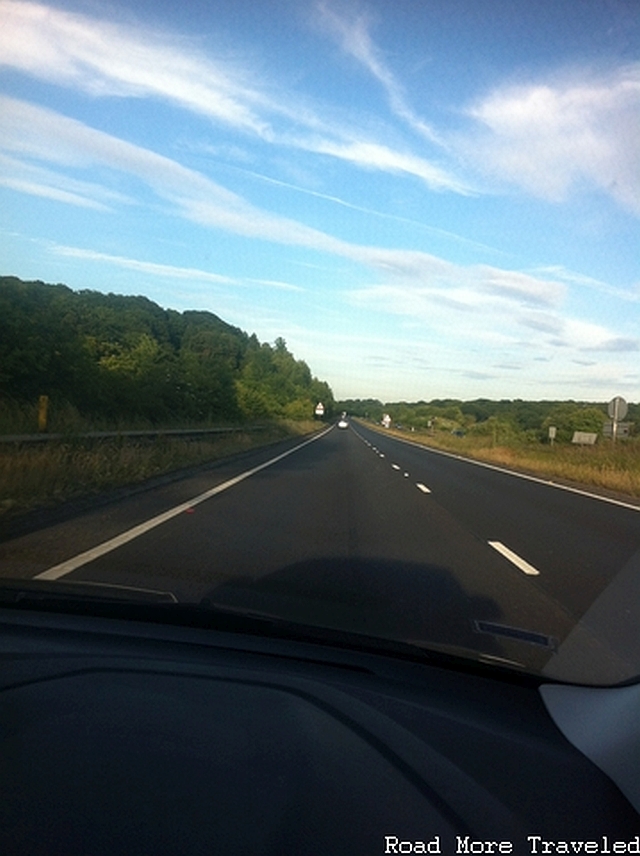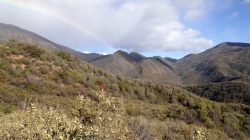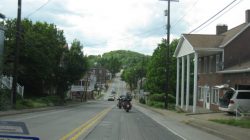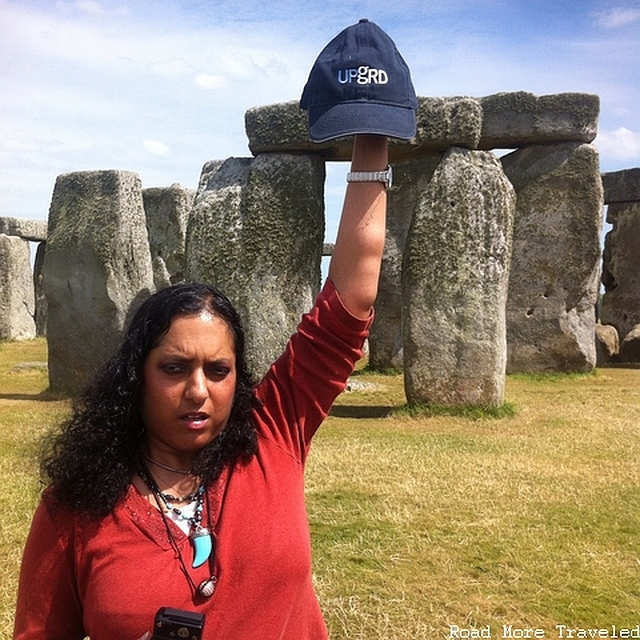
After a pleasant if underwhelming flight from Atlanta to London in British Airways First Class, we had just under 24 hours at our disposal in England before our onward flight to Istanbul to catch our cruise two days later. (I booked a 23 hour, 20 minute connection to skirt the definition of “stopover”. That allowed me to book the entire trip as a single 62.5k AAdvantage award.) So what’s a self-described road trip fanatic to do? What else? Rent a car and drive somewhere. My wife and I decided several months in advance to visit Stonehenge, mainly to see if the demons really do dwell, and if the banshees really do live well, at the famous pile of rocks. A few days before we left, though, a co-worker who originally hails from the general area highly recommended a visit to nearby Salisbury afterwards, so we added that to the agenda.
A Visit to the Pile of Rocks
Our First Class ticket entitled us to use the Galleries Arrivals Lounge upon landing. We just wanted to hit the road, though, so we headed straight to the rental counter. Though a horrendously slow line greeted us, we managed to hit the road by 12:15 for the 71-mile journey to Stonehenge. The journey down the M3 and A303 is pretty easy for the most part. It’s a good way to get acclimated to driving on the left. Despite missing a turn to leave the airport, the first 67 miles flew by in an hour and 15 minutes. But it then took an additional 20 minutes to go the last four due to congestion approaching Stonehenge. You can see a glimpse of the traffic jam below, giving new meaning to the term “the road more traveled”.
Anyway, it was a beautiful, 78 degree afternoon in the southwest of England, a near perfect day for exploring Stonehenge. Although the monument is visible to the right as you approach on the A303, you can’t actually drive up to it directly. The visitor center is located approximately a mile and a half from the stones, and you can either take a shuttle bus or walk the rest of the way. After collecting your tickets, there is a small historical museum and gift shop, as well as a mock-up of what the original Neolithic settlement on the site might have looked like, and a sample of the sarsen stone used to construct Stonehenge.
Sample of sarsen stone used to construct the monument
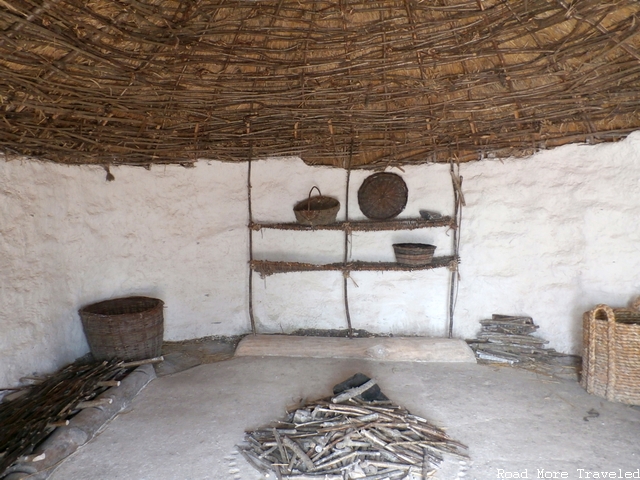
Shuttle buses run every 5-10 minutes; these drop you off just a few hundred feet from the stones at the beginning of the “Avenue”. The “circle” actually consists of a smaller inner circle ringed by a larger outer one. The inner circle doesn’t become apparent until you get up close to the stones, though. You’ll also see a few different types of stones, most notably the larger “sarsen” stones and smaller “bluestone” stones. Much to our relief, the monument wasn’t 18 inches tall.
Visitors may not touch the stones or go inside the circle except on the summer and winter solstices. However, you can walk all the way around for different perspectives. One important thing to note: the circles are not, in fact, the original. The Stonehenge you see today is, in fact, a replica; unfortunately, many originals were damaged, destroyed, or stolen over the centuries. Several stones remain either missing, fallen, or damaged.
The best-known view, the “Sarsen Circle”, with the largest and most regular stones
A bluestone and a ceremonial mound in front of the main circle
Close-up of a bluestone
Another bluestone in front of the larger circle
A better view of the interior circle from the back
Even today, archaeologists don’t fully understand why Stonehenge was built. Regardless, it enjoyed continuous use between approximately 3700 B.C. and 1600 B.C. The most common explanations were that the monument was a Druid temple, a burial mound, a primitive astronomical “computer” for predicting events such as eclipses, or a cult center for healing. Today, as then, Stonehenge attracts thousands of visitors on the summer and winter solstices. Light enters the stones at a specific angle at sunrise and sunset, respectively. This puts on quite the natural light show for visitors.
What perhaps fascinated me the most, though, was how Stonehenge’s builders brought and arranged the massive stones in the first place. Scientists believe the larger sarsen stones originated from the Marlborough Downs, approximately 20 miles to the north. That was a long distance 5,000 years ago, for sure, but to me, the more amazing feat involved the “smaller” bluestones. Bluestone occurs naturally only in the Preseli Hills of south west Wales, nearly 200 miles away. How the one to three ton stones were moved such a long distance is unknown, though it is speculated that they were brought part of the way by boat, and the remainder of the way by pulling or rolling them over logs. That would have been quite a job at the time.
Besides the stone circles, there are also a series of open field hiking trails in the surrounding farmlands for views of both the English countryside and the circles, and a collection of burial mounds between the stone circles and the visitor center. We spent about an hour exploring both. Note: if you plan to walk in the open fields, beware of, um, animal droppings, and approach any cows or sheep with caution.
The beautiful English countryside, complete with cattle and sheep farm
A few sheep grazing in the field
A burial mound to the south of the main circle
A thistle growing wild in the field
A larger collection of burial mounds, or “barrows”, are just to the northeast of the stone circle, back towards the visitor center. If you’ve visited a Native American burial mound in the United States, the concept is similar; human remains, along with some of the person’s personal belongings. Many of these mounds, however, are thought to predate even the construction of Stonehenge. On the way back, stop to enjoy a very nice view of the stone circles from the path, as seen in the last photo.
Stonehenge general information: English Heritage maintains the Stonehenge site today. The visitor center and monument are open year-round, though hours vary by season. Adult tickets are £14.50 if purchased online in advance, or £15.50 if purchased at the visitor center. English Heritage strongly advises purchasing tickets online for a specific 30-minute entry window to minimize waiting, though on the day we visited, if you didn’t have one, there was no problem buying one at the gate. Visit the Stonehenge website for more information.
An Evening in Salisbury
After Stonehenge, we still had some time to kill, so we decided to take my co-worker’s advice and check out Salisbury, just 8 miles to the south on the A360. They say the journey is half the fun, and in this case, it was a fun little country road, with a lot of twists, turns, and hills to enjoy on a sunny day.
The settlement around Salisbury dates back to Neolithic times, but the modern city itself traces its charter back to 1227, under the name New Sarum, which was actually the city’s official name until 2009. With “modern” roots back to the 13th century, as you might expect, the city is best known for its walled “Medieval City”, as well as the incredible, imposing Salisbury Cathedral. It’s easy to reach the city center from Stonehenge; just follow the signs to the city’s three parking garages. I recommend using the one under the Old George Mall on New Street; just follow the signs labeled “Medieval City”.
It was already a little past 4:30 by the time we made it to town, so our agenda would be simple – take a nice walk around the old city to ward off jet leg, grab some dinner, and just generally burn off some time so we wouldn’t have to deal with rush hour traffic when we made it back to London. We started off our tour at the Old George Mall, a couple of former streets transformed into a pedestrian mall. Yes, in this part of the world, even shopping mall façades are historic structures.
Walk one block south, to the corner of New and High Streets, and you reach the “Close Gate”, the entrance to the Medieval City.
Approaching the gate from the north
Approach to the gate from the south
Immediately after walking through the gate, you approach the impressive looking Mompesson House. It is actually a relatively “new” structure for the area, as it dates back “only” to the 18th century. Currently owned and managed by the National Trust, the house contains a collection of period furniture and drinking glasses.
Another block and a half south brings you to the prime attraction of Salisbury, the impressive Salisbury Cathedral.
Construction on the cathedral began 1220 and finished in 1266, and it is still a working church today. Most significantly, one of only four remaining original copies of the Magna Carta is on display here. Throughout 2015, several events will take place commemorating the 800th anniversary of the signing of the Magna Carta. Unfortunately, the cathedral museum was already closed by the time we got there, so we weren’t able to see the historic document.
To the north of the cathedral is the “Cathedral Close”, basically a giant public lawn surrounding the cathedral. If you’re hungry, and visiting between 10 and 5 during the summer, you can also stop in at the Bell Tower Tea Room (pictured below) for a traditional English high tea. Enjoy a cup of tea, cucumber sandwiches, a selection of homemade cakes, and ice cream for £20 for two.
After circling the cathedral, we returned to the “new” portion of Salisbury to grab dinner. “New” is a relative term in old English towns, given that “new” means 16th-18th century construction. There are many small shops you can visit if you’re in the mood, but on a pretty day like today, it was nice to just walk around, get some fresh air, and look at the pretty buildings. With approximately 41,000 inhabitants, you aren’t constantly buzzed by heavy traffic, and the main streets in the city center are pedestrian friendly.
The Old George Mall, with the Parish Church of St. Thomas and St. Edmunds in background
The Avon River as it winds its way through Salisbury
The 14th Century “Poultry Cross”, marking the site of a former poultry market
The “Guildhall”, built in 1795, a former municipal building
After a lovely dinner at the Chapter House restaurant, it was time to head back to London. Probably a good thing, given that we were both running on fumes. With little traffic, it took us roughly an hour and 20 minutes to get back. That’s despite a few missed roundabout exits along the way. Remember the golden rule with roundabouts – it’s impossible to get lost on one, so if you initially aren’t sure which road to take, just go around the entire thing and read all the directional signs. Sure, you’ll be laughed at, but it beats having to find a spot to make a U-turn. Along the way, now fully comfortable with driving on the wrong side of the highway, I was able to better enjoy the views of the quiet English countryside.
One last public service announcement before signing off. I’ve mentioned the importance of checking what kind of credit card rental car coverage you have if you’re planning on driving in a foreign country, and it came in big handy on this trip. Before I event left the airport, I got a little too close to the edge and tapped a curb at. Though the vehicle suffered no damage, the agent dutifully noted an air bubble in the left front tire. And then proceeded to charge me for a replacement. Charging for tires is an all-too-common practice in England and Ireland, it seems.
One of the few cards with an annual fee that I carry is a Diners Club card, mainly because of the primary rental car insurance coverage that is provided at no additional charge. After coming home, I filed a damage claim, and had a check in hand in less than a week. It was only a tire, but the annual fee paid for itself right there.
Note: this post is part of my multi-part trip report series about my wife and I’s trip to Europe in June/July, 2015. Read the trip report introduction for an index and background about our trip.
Photo at top: Stonehenge wears the UPGRD hat, and Prita is not amused at having to play along.


